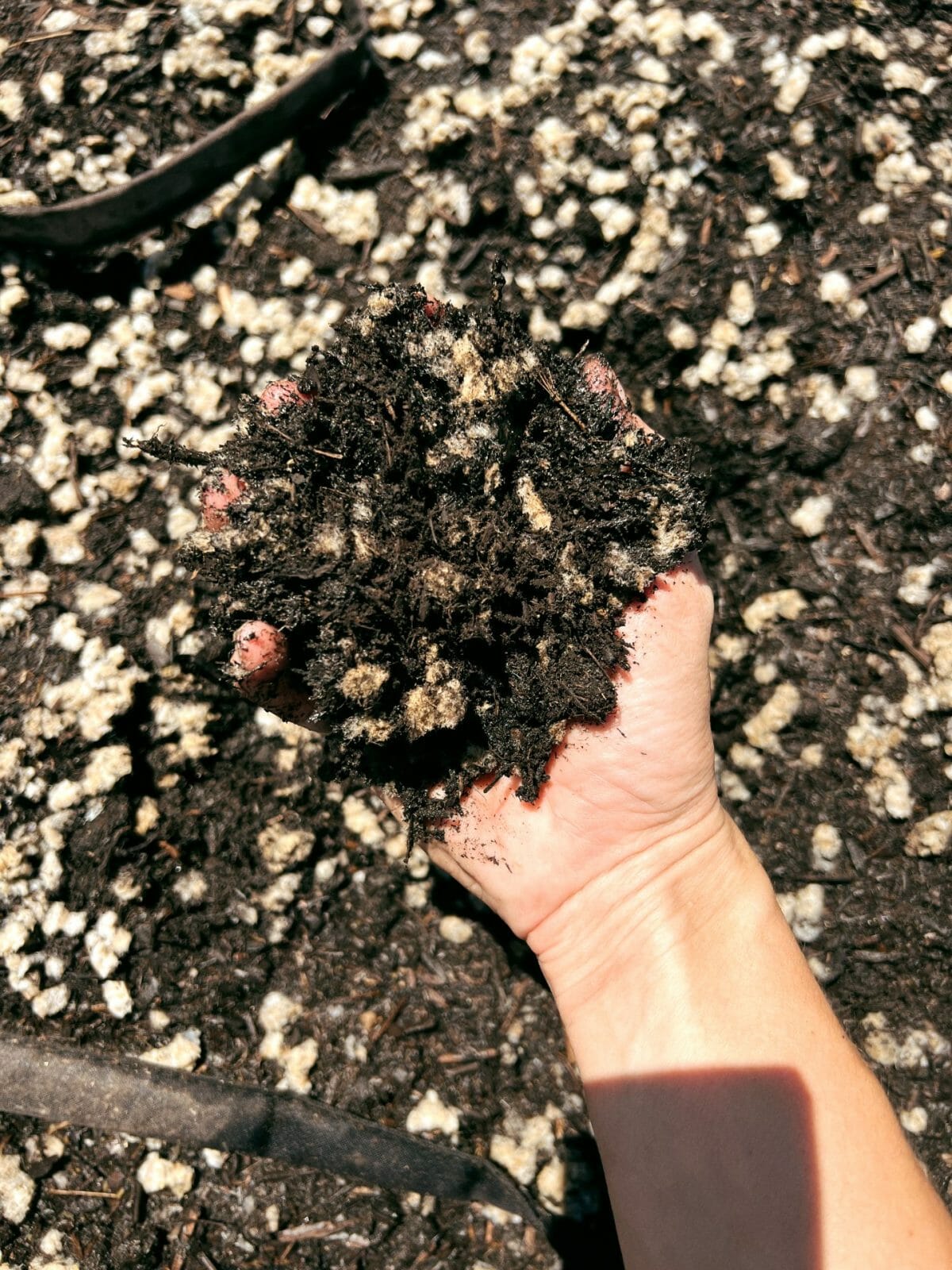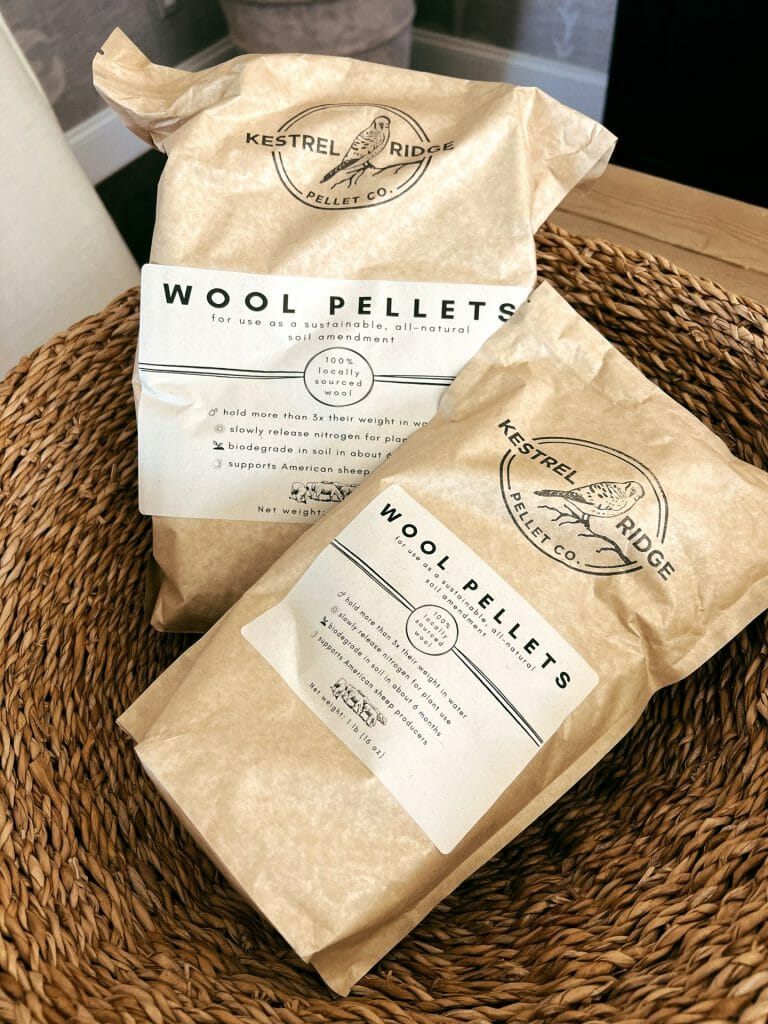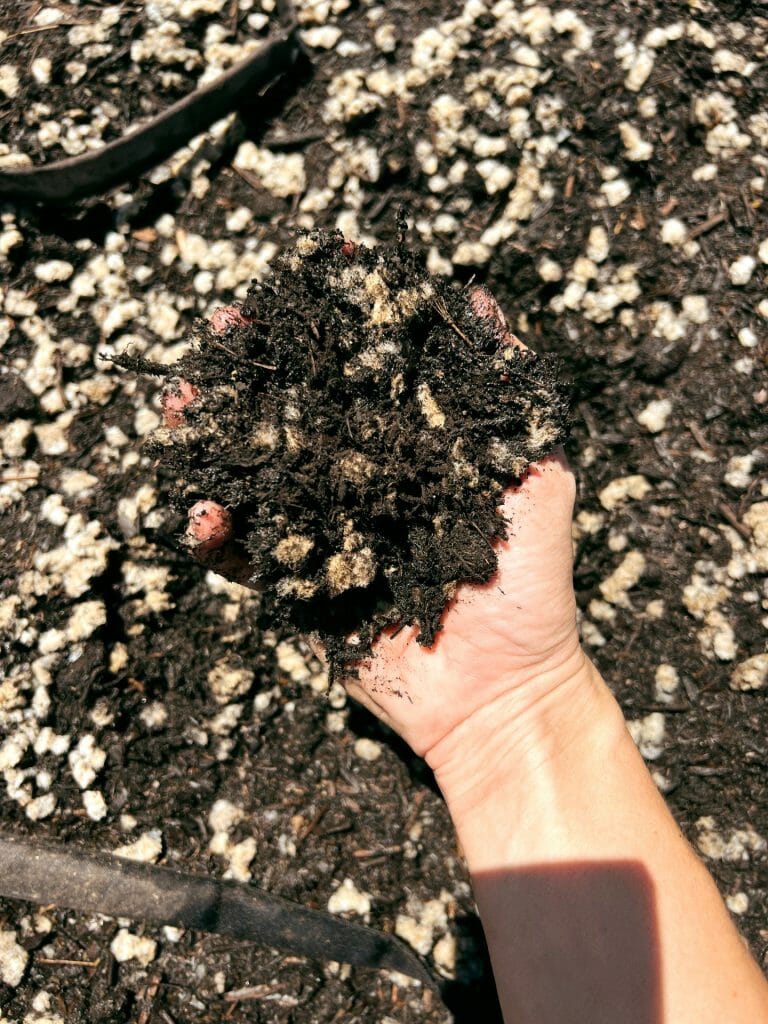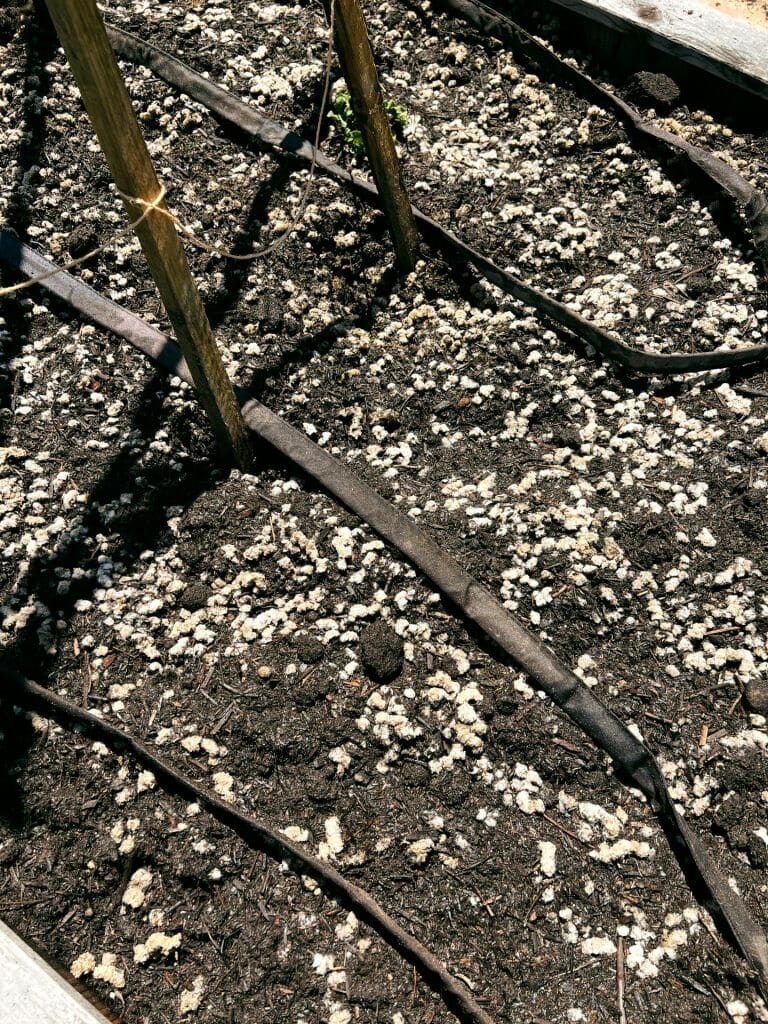
All About Wool Pellets As Soil Amendments
I recently discovered wool pellets as soil amendments for the garden, and will never look back! Even better, I tried them out last season, my Spring/Summer season, which is the hottest and most stressful gardening season. They were heroic! I am about to turn into a bumbling mess about it – shouting from the rooftops, and honestly trying to convince my husband that we need to start a wool pellet company – why is no one talking about this?

What Are Wool Pellets
Wool pellets are a pelleted form of shorn wool. When a sheep is shorn, which is a part of good sheep husbandry, the wool is discarded. This byproduct can instead be made into a pellet and then turned into the garden. This is a sustainable, all-natural way to help our gardens thrive, and supports small local farms.
The Benefits of Wool Pellets in the Garden
The primary benefits of using wool in the garden is three-fold:
- Slow release nitrogen
- Hold more than 3x their weight in water
- Create air in the soil (aeration)
- Deter slugs and snails
As your wool pellets break down, which takes about six months, they release nitrogen the entire time. Nitrogen that doesn’t overwhelm our plants is ideal, so this is such a perk. When you apply a lot of nitrogen via other methods (like bloodmeal) all at once, some of the nutrients slip away quickly.
With the pellets also being able to hold water – three times their weight – they also help keep your beds moist and well-watered. This is a no-brainer and overall increases your soil health.
Additionally, fluffy wool pellets mean some extra air pockets in the soil, otherwise known as aeration, and that makes root growth easier and keeps disease at bay.
Lastly, there are little barbs in the wool that are tiny tiny that will deter slugs and snails, which are a common Fall gardening issue – this is a BIG win.


How to Use Wool Pellets As A Soil Amendment
When you turn your pellets into the garden, they fluff up with water, helping to hold water and slowly release it, much like a wool sweater that gets wet and then slowly dries. Each company will give its own instructions, but I’ve been using Kestrel Ridge Wool Pellets and they recommend that 5% of the soil volume is pellets. I would say I use about 3 lbs per raised bed.
I simply scatter my pellets out on top of my bed with the other amendments that I use and then rake it into the top few inches of soil. Nothing major. You’ll see the gray pellets mixed in and resting on top of the soil around my plants.
Overall, I would say discovering wool pellets as a soil amendment was a huge win for me as a gardener. I even partnered up with Kestrel Ridge to get you a discount! You can see me apply the pellets over on Instagram if you want a video.
Use code BAILEY10 for money off.
If you have questions, comment them here and I’ll answer them asap.
If you need Fall gardening help, consider my free seed starting guide, as well as a US Hardiness Zone-specific planting calendar for each vegetable and herb to be sure you’re starting everything in the proper timing.
This post contains affiliate links, which add no cost to you, but help support my family – thank you!
